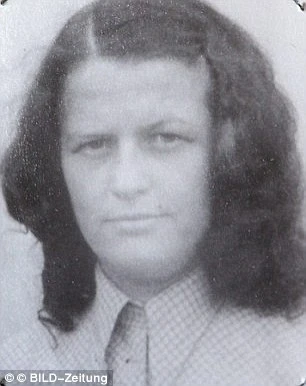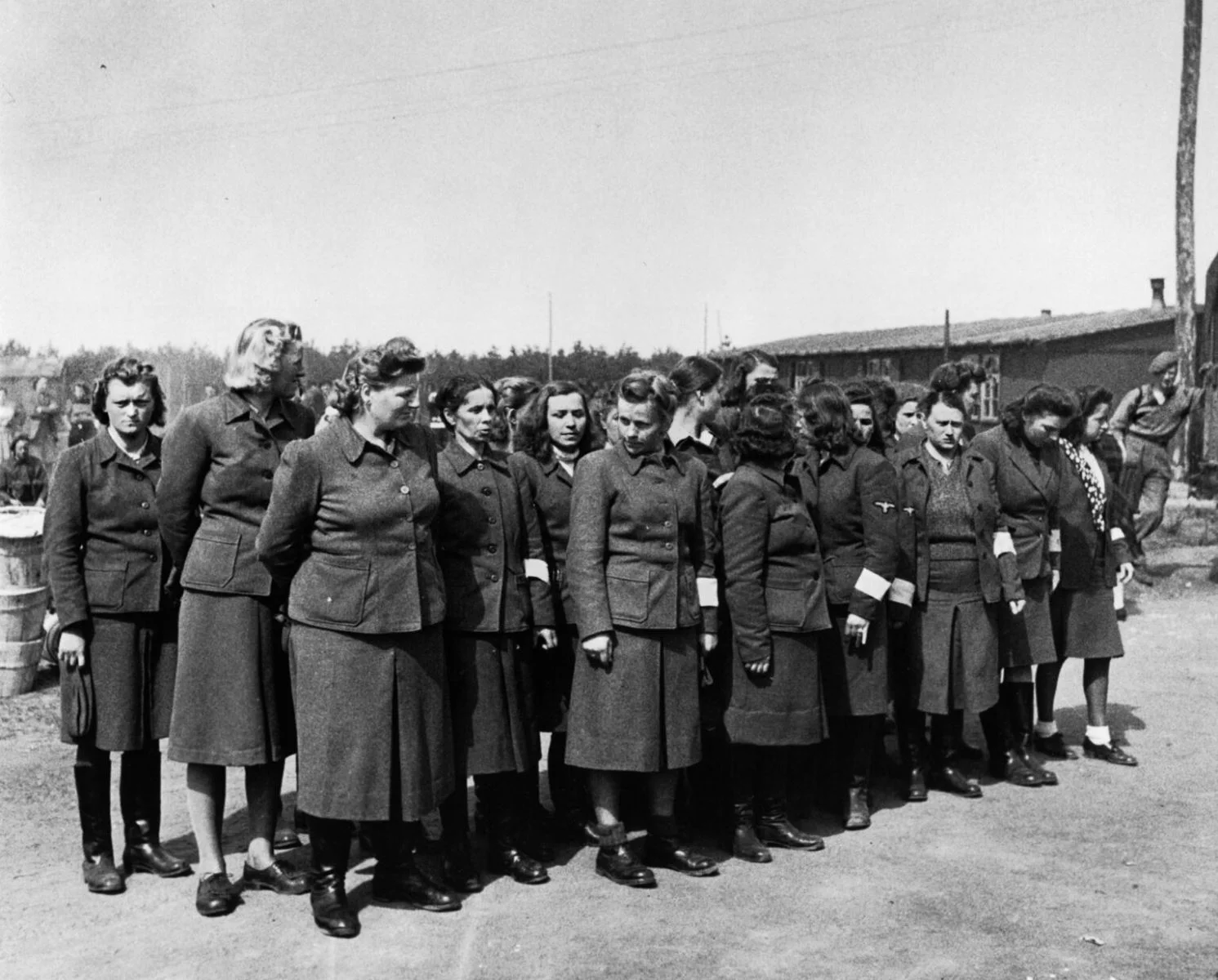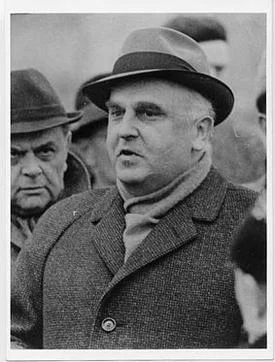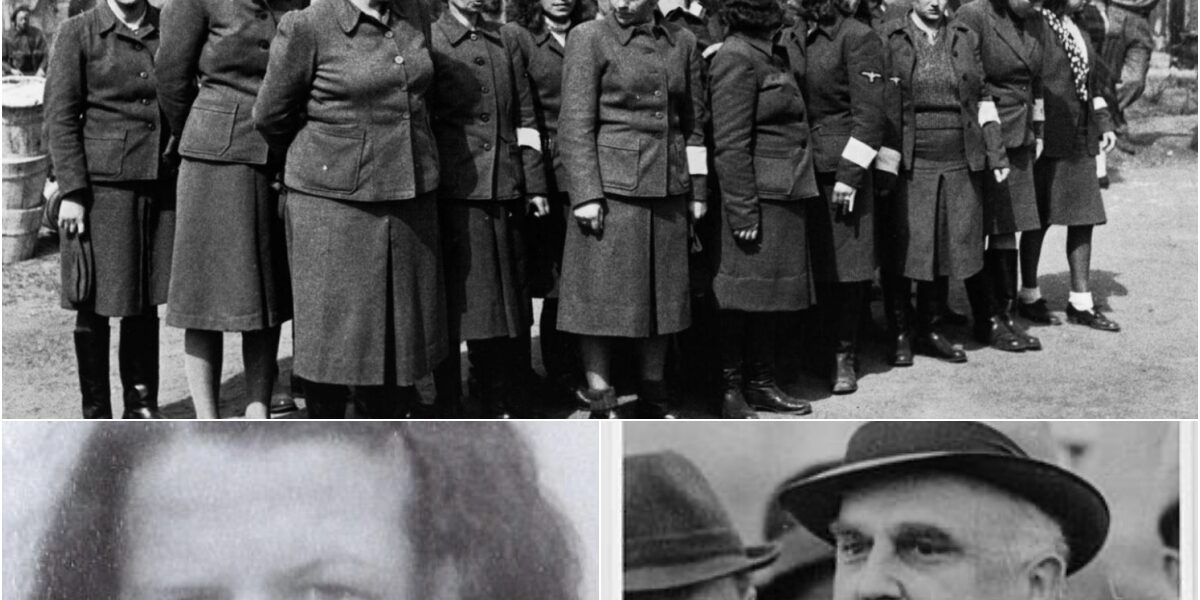THE IRON MAIDEN’S SECRET: Nazi Guard Gisela S’s Forbidden SS Romance and Her DARKEST Crimes Revealed
The horrors of the Nazi concentration camps during World War II are etched into history, with figures like Gisela S, a stern and unforgiving female guard at Auschwitz, embodying the cruelty of the regime. Unlike the deceptive smile of her counterpart Charlotte S, Gisela’s harsh demeanor and ruthless punishments—overseeing the torturous “standing cells” and punishing prisoners for the slightest infractions—left a lasting mark on survivors. Her romantic ties to SS doctor Franz Bernhard Lucas and her eventual escape from justice in the 1960s Auschwitz trials add layers to her chilling story. As we uncover Gisela’s role in the Holocaust, her evasion of accountability raises questions about justice for Nazi war criminals. How did such a figure slip through the cracks, and what does her story reveal about the complexities of confronting the past?

Gisela S once joined the brutally notorious Waffen SS of Nazi Germany. Photo: Bild
Gisela S’s tenure as a guard at Auschwitz, one of the most notorious Nazi concentration camps, reveals the brutal role of female guards in the Holocaust. Her strict enforcement of discipline, oversight of inhumane “standing cells,” and personal connections within the SS highlight her complicity in Nazi atrocities. With only a handful of the 3,700 female guards facing justice, Gisela’s story—marked by her escape from imprisonment despite charges in the 1960s—underscores the challenges of holding perpetrators accountable. Let’s explore her actions, her relationship with SS doctor Franz Lucas, the Auschwitz trials, and the broader implications for historical justice.
Gisela S: The Iron Hand of Auschwitz
At Auschwitz, where over 1.1 million people were murdered, Gisela S stood out for her unrelenting severity. Unlike Charlotte S, whose “gentle smile” masked her cruelty, Gisela’s stern expression signaled immediate danger. Survivors recall her readiness to punish prisoners for the smallest infractions—whether a misplaced step or a whispered word—with beatings or worse. Her oversight of the “standing cells,” tiny, dark chambers where up to 15 prisoners were crammed together, unable to sit or lie down, was particularly horrific. These cells, designed for maximum suffering, caused physical and psychological torment, with many prisoners succumbing to exhaustion or injury. An X user reflected on survivor accounts: “Gisela’s cruelty in those standing cells is unimaginable. How could anyone enforce such torture?”
As an Aufseherin (female overseer), Gisela was integral to Auschwitz’s operations, enforcing Nazi policies of dehumanization. Her role extended beyond physical punishment to psychological terror, as her strict demeanor instilled constant fear. Auschwitz’s horrors—gas chambers, forced labor, and medical experiments—relied on guards like Gisela to maintain order through violence. Her actions align with the broader pattern of female guards, who were often as brutal as their male counterparts, shattering myths of women as passive bystanders in the Nazi regime. An X post noted, “Gisela S proves female guards were just as ruthless. Their stories need more attention.”

A Complicated Romance: Gisela and Franz Lucas
Gisela’s personal life adds a complex dimension to her story. She engaged in a romantic relationship with SS doctor Franz Bernhard Lucas, a figure who later distanced himself from the camp’s most notorious atrocities. Lucas reportedly criticized the gruesome medical experiments conducted by Dr. Josef Mengele, the “Angel of Death,” who performed horrific procedures on prisoners, including vivisections and sterilization experiments. This criticism led to the dissolution of Gisela and Lucas’s relationship, highlighting tensions within the SS hierarchy. While Lucas’s objections suggest a moral conflict, Gisela’s continued role as a guard indicates her unwavering commitment to the Nazi system, despite her personal ties.
This relationship sheds light on the blurred lines between personal and professional conduct in the camps. Romantic entanglements among SS personnel were not uncommon, but they often coexisted with complicity in atrocities. Gisela’s willingness to oversee the standing cells and punish prisoners, even as her partner questioned Mengele’s experiments, underscores her active participation in the Holocaust’s machinery. An X user remarked, “Gisela’s romance with Lucas is wild—how do you love someone while running a death camp?” Her story reveals the chilling normalcy of personal lives amidst unimaginable cruelty.
The Auschwitz Trials: Justice Denied

Franz Lucas – the lover of Gisela S
In the 1960s, the Auschwitz trials in Frankfurt sought to hold Nazi perpetrators accountable, targeting guards and supervisors like Gisela S. She faced charges for her role in the camp’s atrocities, including her oversight of the standing cells and her brutal punishments. However, Gisela escaped imprisonment, a fate shared by many of the 3,700 female guards, only three of whom were convicted for complicity in mass murder. Prosecutors later cited her advanced age and frail health as reasons she could not face further trials, allowing her to evade full accountability. This outcome frustrated survivors and advocates, as an X post captured: “Gisela S walked free after all that? The system failed those victims.”
The Auschwitz trials, held from 1963 to 1965, convicted 17 of 22 defendants, but sentences were often lenient, with some receiving as little as three years. The challenges of prosecuting lower-level perpetrators like Gisela included limited evidence, the passage of time, and the sheer scale of Nazi crimes, which overwhelmed judicial systems. Female guards, whose roles were sometimes downplayed as “supportive,” faced less scrutiny than high-ranking SS officers, despite their direct involvement in prisoner suffering. Gisela’s case exemplifies this gap, as her stern enforcement of Nazi brutality went largely unpunished.
The Broader Implications: Women and Accountability in the Nazi Regime
Gisela S’s story raises critical questions about the role of women in the Nazi system and the pursuit of justice. Female guards were not passive participants; they were active enforcers, often recruited from working-class backgrounds with promises of stable jobs and authority. Gisela’s harsh demeanor and willingness to punish reflect how the Nazi regime co-opted ordinary individuals into its genocidal machinery. Her escape from justice mirrors a broader failure to hold all perpetrators accountable, particularly women, whose contributions to the Holocaust were long overlooked. An X user noted, “We focus on Mengele, but guards like Gisela were the backbone of Auschwitz’s cruelty.”
Survivors’ testimonies remain vital in preserving the memory of these atrocities. The standing cells, under Gisela’s watch, symbolize the depths of Nazi inhumanity, and the lack of justice for figures like her fuels ongoing debates about historical accountability. With only a fraction of female guards prosecuted, the legacy of their actions lingers, challenging societies to confront uncomfortable truths about complicity. As one X post put it, “Gisela’s story shows why we can’t stop seeking justice, even decades later.”
Gisela S’s role as a stern and brutal guard at Auschwitz, overseeing the torturous standing cells and punishing prisoners with unrelenting cruelty, marks her as a chilling figure in the Holocaust. Her romantic ties to SS doctor Franz Lucas and her escape from justice in the 1960s Auschwitz trials highlight the complexities of her story and the broader failures of post-war accountability. As one of the many female guards who evaded punishment, Gisela’s case underscores the challenges of confronting Nazi complicity, particularly among women. Her story demands reflection: how do we ensure justice for such atrocities, and what lessons can we draw from history’s gaps?




